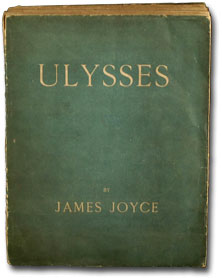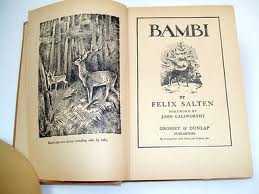The social and economic changes of the 1920s not only manifested themselves in the music that was written during the decade, but into literature also.
Like the music of the Roaring 20s, some of the themes and writing styles were considered controversial at the time, but have survived to become much-loved works.
Here’s a few of our favourites…
The Great Gatsby – by F. Scott Fitzgerald (U.S.) 1925
The novel that defined the era.
Inspired by the parties he attended on Long Island’s north shore, Fitzgerald began writing The Great Gatsby in 1922, with the aim of producing “something new—something extraordinary and beautiful and simple and intricately patterned.”
The novel revolves around the young and mysterious millionaire Jay Gatsby and his passion for the beautiful Daisy Buchannan. It paints a critical portrait of the Jazz age, an era known not only for unprecedented economic prosperity, jazz music and flapper culture, but also for bootlegging and organised crime.
Despite being very much inspired by the mood of the time, the plot is timeless and relatable, exploring themes of decadence, idealism and excess and has been described as cautionary tale regarding the American Dream.
Ulysses – by James Joyce (Ireland) 1922
Considered to be one of the most important works of Modernist literature, Ulysses was first serialised in parts in an American journal called The Little Review between 1918 and 1920, and was published in its entirely in 1922.
Ulysses chronicles an ordinary day in the life of Dubliner Leopold Bloom and establishes a series of parallels between its characters and those of Homer’s poem Odyssey (Ulysses being the Latinised name of Odyssus).
Ulysses is approximately 265,000 words in length, using a lexicon of 30,030 words. The experimental prose – full of puns and allusions as well as the stream of consciousness technique, rich characterisations and humour, have made the book highly regarded, however it has also attracted controversy and scrutiny.
In 1998, the Modern Library ranked Ulysses first on its list of the 100 best English-language novels of the 20th century.
Winnie-the-Pooh – by A.A. Milne (England)1926
Winnie-the-Pooh, also known as Pooh Bear was created by A. A. Milne. The first collection of stories about the character was the book Winnie-the-Pooh, which was published in 1926 and was followed up by The House at Pooh Corner in 1928.
Milne named the character Winnie-the-Pooh after a teddy bear owned by his son, Christopher Robin Milne, who was also the basis for the character Christopher Robin. Christopher’s toys also lent their names to most of the other characters. Christopher had named his toy bear “Winnie” after a Canadian black bear he often saw at London Zoo, and “Pooh”, after a swan they had met while on holiday.
The Pooh stories have been translated into many languages, including Alexander Lenard’s Latin translation, Winnie ille Pu, which was first published in 1958, and, in 1960, became the only Latin book ever to have been featured on The New York Times Best Seller list.
Lady Chatterley’s Lover – D. H. Lawrence (England) 1928
The controversial Lady Chatterley’s Lover was first published privately in Italy in 1928. The book became notorious for its story of the physical relationship between a working-class man and an upper-class woman, its explicit descriptions of sex and its use of words that were considered unprintable at the time.
When the full unexpurgated edition was finally published by Penguin Books in Britain in 1960, the trial of Penguin under the Obscene Publications Act of 1959 was a major public event and the publishers only escaped conviction by being able to prove the book was a work of literary merit. Until then, the only version available in Britain was heavily censored.
Besides the sexual content of the book, Lady Chatterly’s Lover also paints a picture of the class system and social conflict in Britain in the early 20th century. The affair of the aristocratic woman with the working class man is said to draw parallels to the situation into which Lawrence was born and that into which he was married. Lawrence’s father was a coal miner, and the signs of dissatisfaction and resentment of the working-class mining community are also present in the book.
Bambi, a Life in the Woods – by Felix Salten (Austria) 1923
Considered to be one of the first environmentally conscious novels ever published, Bambi, a Life in the Woods or Bambi. Eine Lebensgeschichte aus dem Walde was originally published as an adult book in Salten’s native Austria. The novel traces the life of a male roe deer from his childhood and loss of his mother to finding a mate, whilst all the time learning from his father the dangers posed by humans in the forest.
More than 200 editions of the novel have been released, with almost 100 German and English editions alone, and numerous translations and reprintings in more than 20 other languages. It has also been released in a variety of formats, including printed medium, audio book, Braille, and E-book formats.
With the Second World War looming, the publisher of the first English translation of the book, Max Schuster, helped Salten who was Jewish, to flee Nazi Germany in 1933 and introduced him, and Bambi to the Walt Disney Studios. MGM films were initially interested in making a live-action adaptation of the work, however this was considered too difficult. Walt Disney bought the rights in 1937 and started working on the animation immediately, adapting the story for a young audience as it was considered a bit grim and sombre for children.
Check out our Pinterest board for The Roaring 20s, for more images and video clips




